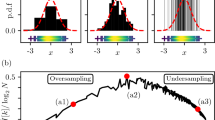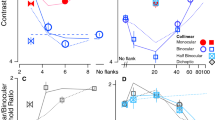Abstract
A PRIME requirement in a television system is that the flicker inherently associated with the displayed picture should be minimal. The visibility of such flicker is generally considered to depend primarily on the picture luminance, the angle subtended by the picture and the field repetition frequency. The field frequency should therefore be chosen to be close to, and ideally higher than, the fusion frequency for the human visual system. With the display luminances generally encountered in normal broadcast television, field frequency flicker is negligible in countries using 60 fields s−1, and, though often noticeable, has proved acceptable in those using 50 fields s−1.
This is a preview of subscription content, access via your institution
Access options
Subscribe to this journal
Receive 51 print issues and online access
$199.00 per year
only $3.90 per issue
Buy this article
- Purchase on Springer Link
- Instant access to full article PDF
Prices may be subject to local taxes which are calculated during checkout
Similar content being viewed by others
Author information
Authors and Affiliations
Rights and permissions
About this article
Cite this article
CORBETT, J., WHITE, T. Visibility of flicker in television pictures. Nature 261, 689–690 (1976). https://doi.org/10.1038/261689a0
Received:
Accepted:
Published:
Issue Date:
DOI: https://doi.org/10.1038/261689a0
Comments
By submitting a comment you agree to abide by our Terms and Community Guidelines. If you find something abusive or that does not comply with our terms or guidelines please flag it as inappropriate.



